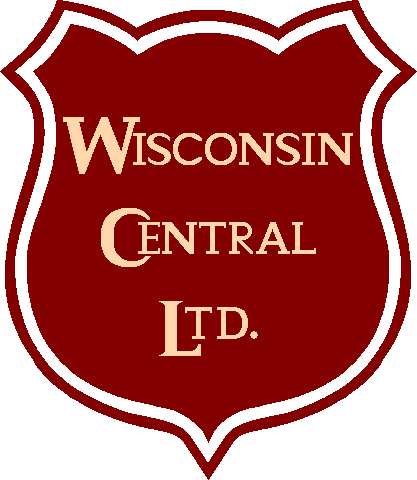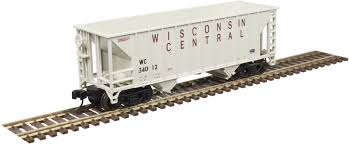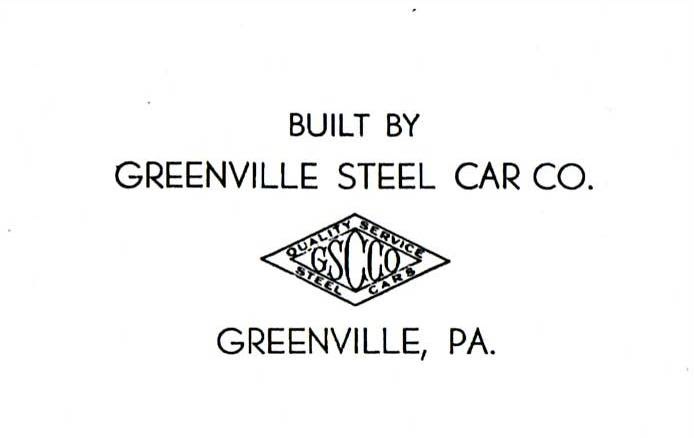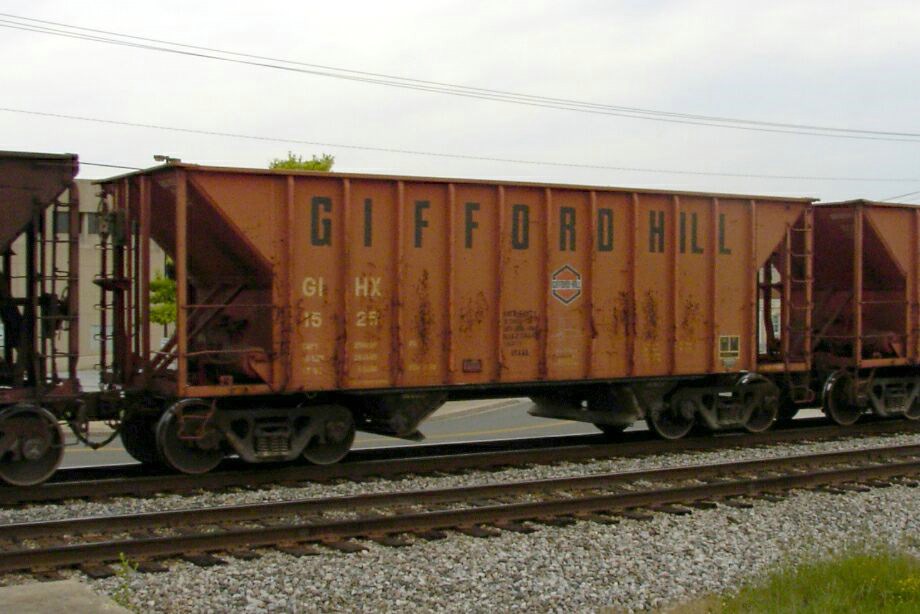Specific Item Information: In the 1970’s, Greenville began to build a fleet of venerable open top hoppers. These would be known as the Greenville 100-ton 2-Bay Hopper. They could been seen in any type of service, hauling rock, ballast, dirt, sand, and even taconite ore. Their smaller size and 2-bay hopper doors made them very versatile for any service in any condition. Atlas’ offering of the Greenville Hopper features crisp lettering, durable body, fine end ladder and end details, and free rolling trucks. A group of cars would look right at home in a unit train arriving from the quarry or buried in your consist delivering a shipment of clean dirt to a construction site.
Model Information: Walthers announced this car in late July 2010 with delivery in March of 2011. These ready-to-run models feature a detailed, one-piece plastic body, a heavy one-piece die cast underframe, separate door and brake details, free-rolling trucks and working knuckle couplers.
Matching Aggregate Load: Walthers 933-801
Matching Aggregate Load: Walthers 933-801
Prototype History: Since the 1970s, these versatile twin hoppers have been used in ballast, sand, gravel and ore service. You'll find single car shipments as well as unit trains running on the rails, Several railroads (including Wisconsin Central, Southern, Norfolk Southern and others) have also used them to haul taconite pellets from mines and ports to steel mills.
Used everywhere, they're at home in your quarry, steel mills or waterfront scenes. Add them to your work trains as ballast hoppers, or to your unit rock trains alongside Ortner Aggregate Hoppers for runs across your layout.
From Walthers, as description to the N scale model of the Greenville 100-Ton 2-Bay Open Hopper.
Used everywhere, they're at home in your quarry, steel mills or waterfront scenes. Add them to your work trains as ballast hoppers, or to your unit rock trains alongside Ortner Aggregate Hoppers for runs across your layout.
From Walthers, as description to the N scale model of the Greenville 100-Ton 2-Bay Open Hopper.
Road Name History:  Wisconsin Central Ltd. (reporting mark WC) is a railroad subsidiary of the Canadian National Railway. At one time, its parent Wisconsin Central Transportation Corporation owned or operated railroads in the United States, Canada (Algoma Central Railway), the United Kingdom (English Welsh & Scottish), New Zealand (Tranz Rail), and Australia (Australian Transport Network).
Wisconsin Central Ltd. (reporting mark WC) is a railroad subsidiary of the Canadian National Railway. At one time, its parent Wisconsin Central Transportation Corporation owned or operated railroads in the United States, Canada (Algoma Central Railway), the United Kingdom (English Welsh & Scottish), New Zealand (Tranz Rail), and Australia (Australian Transport Network).
Wisconsin Central Ltd. (WC) started in US in the mid-1980s using most of the original Wisconsin Central Railway's rights of way and some former Milwaukee Road rights of way after the Soo Line Railroad acquired the Wisconsin, Illinois, Indiana, Missouri and Minnesota holdings of the bankrupt Milwaukee Road and divested its older railway trackage in Wisconsin. In 1993 the Wisconsin Central also acquired the Green Bay and Western Railroad and the Fox River Valley Railroad.
At the time of its sale to Canadian National, Wisconsin Central operated over 2,850 miles (4,590 km) of track in the Great Lakes region. The railroad extended from Chicago into and through Wisconsin to Minneapolis/St. Paul and Duluth, Minnesota, to Sault Ste Marie, Michigan, and north (through the Algoma Central Railway) to Hearst, Ontario.
A condition of Soo Line’s acquisition of Milwaukee Road was that they had to sell a number of lines in Wisconsin and Michigan’s Upper Peninsula. They established Lake States Transportation to separate these lines from the rest of Soo Line. In 1987, Lake States was sold to a group of investors and Wisconsin Central was born. Much of the track had belonged to the original Wisconsin Central, a Soo subsidiary which had been merged into Soo in 1960. In 1993, WC acquired Fox River Valley Railroad and Green Bay & Western. In 1995, they founded a Canadian subsidiary and acquired the Algoma Central. Then in 1997, they picked up another 200 miles of former C&NW line running north from Green Bay from Union Pacific. At this point, the 2,850 mile WC (between GM&O and Erie Lackawanna in relative size) linked: Chicago, Milwaukee, Green Bay, Minneapolis/St.Paul, Duluth/Superior, then down Michigan’s Upper Peninsula to Sault Ste. Marie where they connected to Algoma Central north to Hearst, Ontario. WC’s parent company also went on a buying spree of railroads in other countries including New Zealand, Britain, and Australia. Wisconsin Central was sold to Canadian National in 2001. It operates as a paper railroad under CN’s flag today.
From Wikipedia and Bluford Shops

Wisconsin Central Ltd. (WC) started in US in the mid-1980s using most of the original Wisconsin Central Railway's rights of way and some former Milwaukee Road rights of way after the Soo Line Railroad acquired the Wisconsin, Illinois, Indiana, Missouri and Minnesota holdings of the bankrupt Milwaukee Road and divested its older railway trackage in Wisconsin. In 1993 the Wisconsin Central also acquired the Green Bay and Western Railroad and the Fox River Valley Railroad.
At the time of its sale to Canadian National, Wisconsin Central operated over 2,850 miles (4,590 km) of track in the Great Lakes region. The railroad extended from Chicago into and through Wisconsin to Minneapolis/St. Paul and Duluth, Minnesota, to Sault Ste Marie, Michigan, and north (through the Algoma Central Railway) to Hearst, Ontario.
A condition of Soo Line’s acquisition of Milwaukee Road was that they had to sell a number of lines in Wisconsin and Michigan’s Upper Peninsula. They established Lake States Transportation to separate these lines from the rest of Soo Line. In 1987, Lake States was sold to a group of investors and Wisconsin Central was born. Much of the track had belonged to the original Wisconsin Central, a Soo subsidiary which had been merged into Soo in 1960. In 1993, WC acquired Fox River Valley Railroad and Green Bay & Western. In 1995, they founded a Canadian subsidiary and acquired the Algoma Central. Then in 1997, they picked up another 200 miles of former C&NW line running north from Green Bay from Union Pacific. At this point, the 2,850 mile WC (between GM&O and Erie Lackawanna in relative size) linked: Chicago, Milwaukee, Green Bay, Minneapolis/St.Paul, Duluth/Superior, then down Michigan’s Upper Peninsula to Sault Ste. Marie where they connected to Algoma Central north to Hearst, Ontario. WC’s parent company also went on a buying spree of railroads in other countries including New Zealand, Britain, and Australia. Wisconsin Central was sold to Canadian National in 2001. It operates as a paper railroad under CN’s flag today.
From Wikipedia and Bluford Shops
Brand/Importer Information: In 1924 Stephan Schaffan, Sr. founded the Atlas Tool Company in Newark, New Jersey. In 1933 his son, Stephan Schaffan, Jr., came to work for his father at the age of sixteen. Steve Jr. built model airplanes as a hobby and frequented a local hobby shop. Being an enterprising young man, he would often ask the owner if there was anything he could do to earn some extra spending money. Tired of listening to his requests, the hobby-store owner threw some model railroad track parts his way and said, "Here, see if you can improve on this".
In those days, railroad modelers had to assemble and build everything from scratch. Steve Jr. created a "switch kit" which sold so well, that the entire family worked on them in the basement at night, while doing business as usual in the machine shop during the day.
Subsequently, Steve Jr. engineered the stapling of rail to fiber track, along with inventing the first practical rail joiner and pre-assembled turnouts and flexible track. All of these products, and more, helped to popularize model railroading and assisted in the creation of a mass-market hobby. The budding entrepreneur quickly outgrew the limitations of a basement and small garage operation. Realizing they could actually make a living selling track and related products, Steve and his father had the first factory built in Hillside, New Jersey at 413 Florence Avenue in 1947. On September 30, 1949, the Atlas Tool Company was officially incorporated as a New Jersey company.
In 1985, Steve was honored posthumously for his inventions by the Model Railroad Industry Association and was inducted into the Model Railroad Industry Hall of Fame in Baltimore, Maryland. In addition, Steve was nominated and entered into the National Model Railroad Association Pioneers of Model Railroading in 1995.
In the early 1990s, the Atlas Tool Company changed its name to Atlas Model Railroad Company, Inc.
In those days, railroad modelers had to assemble and build everything from scratch. Steve Jr. created a "switch kit" which sold so well, that the entire family worked on them in the basement at night, while doing business as usual in the machine shop during the day.
Subsequently, Steve Jr. engineered the stapling of rail to fiber track, along with inventing the first practical rail joiner and pre-assembled turnouts and flexible track. All of these products, and more, helped to popularize model railroading and assisted in the creation of a mass-market hobby. The budding entrepreneur quickly outgrew the limitations of a basement and small garage operation. Realizing they could actually make a living selling track and related products, Steve and his father had the first factory built in Hillside, New Jersey at 413 Florence Avenue in 1947. On September 30, 1949, the Atlas Tool Company was officially incorporated as a New Jersey company.
In 1985, Steve was honored posthumously for his inventions by the Model Railroad Industry Association and was inducted into the Model Railroad Industry Hall of Fame in Baltimore, Maryland. In addition, Steve was nominated and entered into the National Model Railroad Association Pioneers of Model Railroading in 1995.
In the early 1990s, the Atlas Tool Company changed its name to Atlas Model Railroad Company, Inc.
Item created by: Jenna on 2019-09-05 21:08:20. Last edited by CMK on 2021-09-09 04:56:43
If you see errors or missing data in this entry, please feel free to log in and edit it. Anyone with a Gmail account can log in instantly.
If you see errors or missing data in this entry, please feel free to log in and edit it. Anyone with a Gmail account can log in instantly.










